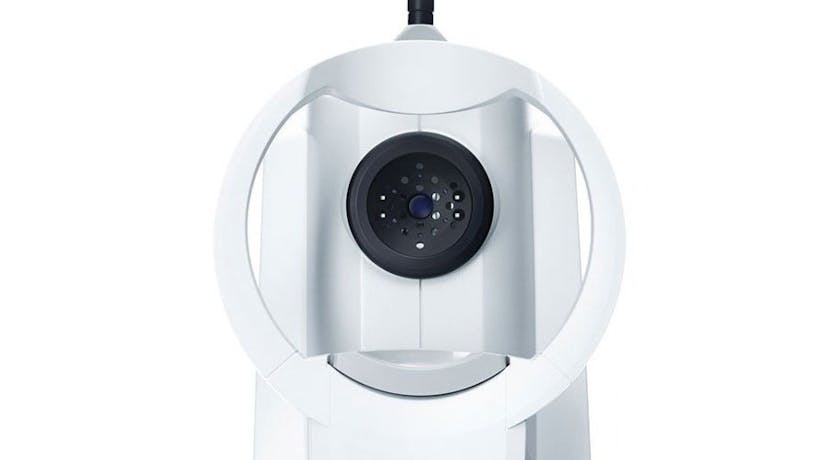
Understanding Causes, Symptoms & Treatment Options for Nerve Palsies
Embark on an exploration into the nuanced world of Nerve Palsies as it pertains to the intricate anatomy of the human eye. Nerve palsies in ocular health signify a disruption in the normal functioning of the nerves associated with vision, often resulting in distinctive visual impairments. Whether arising from factors such as trauma, inflammation, or underlying medical conditions, these nerve-related challenges can impact both the motor and sensory aspects of ocular function. In this journey, we navigate the complexities surrounding eye-specific nerve palsies, shedding light on their origins, unravelling the unique symptoms they present, and exploring the specialised treatment approaches available. Join us as we focus our lens on the distinctive realm of ocular nerve palsies, aiming to enhance comprehension and empower individuals with valuable insights into addressing and managing these visual intricacies.
What Causes Nerve Palsies in the Eyes?
Our eyeballs are attached to six extra-ocular muscles which allow the eyes to move into all the various positions of gaze. Theses extra-ocular muscles are innervated by the third, fourth and sixth cranial nerves, if the innervation to one of more of these cranial nerves is interrupted it causes problems with the eye movements and often results in double vision.
Nerve palsies in the eyes, also known as ocular nerve palsies, can result from a variety of underlying causes. One common factor is trauma, which may include head injuries, fractures, or surgical procedures involving the eye or surrounding structures. Inflammatory conditions, such as optic neuritis or autoimmune disorders like Multiple sclerosis,, can also lead to nerve palsies by affecting the nerves associated with eye movement.
Vascular issues, such as ischemia or insufficient blood flow to the nerves, may contribute to nerve palsies in the eyes, common conditions include diabetes or hypertension. Infections, including viral or bacterial infections, can impact the nerves and lead to inflammation or damage. Nerve palsies can be present from birth (congenital) or acquired later in life.
It's essential to consider idiopathic cases where the exact cause remains unknown. In some instances, nerve palsies in the eyes may occur spontaneously without a clear precipitating factor. Understanding the diverse array of potential causes is crucial for accurate diagnosis and effective management of ocular nerve palsies.
How Can We Manage Ocular Nerve Palsies?
The management of ocular nerve palsies depends on the underlying cause, the specific nerves affected, and the severity of the condition. Here are some approaches commonly considered:
Observation and Conservative Management
In cases where the nerve palsy is mild and is expected to resolve on its own, the primary approach may be observation. Conservative management may involve measures such as temporary prisms on glasses or patching one eye to alleviate double vision until full recovery.
Medical Treatment
If the nerve palsy is associated with an underlying vascular, inflammatory or infectious condition, medical treatment may be prescribed. This could include corticosteroids to reduce inflammation or antiviral medications in the case of viral infections.
Addressing Underlying Health Conditions
If the nerve palsy is secondary to systemic health conditions like diabetes or hypertension, managing and controlling these underlying health issues becomes crucial. Lifestyle changes, medication, or other interventions may be recommended to address these contributing factors.
Botulinum Toxin Injections
Botulinum toxin injections, known as Botox, may be considered for certain cases of nerve palsies affecting eye movement. This treatment can help temporarily alleviate muscle spasms and improve the alignment of the eyes.
Surgery
Surgical intervention may be recommended in specific situations, especially if the nerve palsy is a result of trauma or compression. or if a residual eye misalignment remains after a period of stability. Surgery can help correct muscle imbalances, restore proper eye alignment, or address other structural issues contributing to nerve palsy.

Prism Glasses
Temporary stick-on prisms or longer term Prismatic-glasses may be issued to individuals experiencing double vision due to ocular nerve palsies. These specialised glasses help to align images properly and reduce the perception of double vision.
Moreover, the treatment plan is individualised based on the specific circumstances of each case. A comprehensive eye examination and consultation with a healthcare professional, often an ophthalmologist and orthoptist or neurologist, are essential to determine the most appropriate course of action for managing ocular nerve palsies.
How To Determine If You Have Ocular Nerve Palsies
Detecting ocular nerve palsies typically involves recognising specific symptoms and undergoing a thorough eye examination. Here are some signs and steps individuals can consider to determine if they might have ocular nerve palsies:
Double Vision (Diplopia)
If you experience double vision, especially when looking in specific directions, it could indicate ocular nerve palsies.
Eye Misalignment
Ocular nerve palsies may cause the eyes to appear misaligned, leading to a condition known as strabismus. Observing the alignment of the eyes in a mirror or noticing an inward or outward deviation can be indicative of nerve palsy.
Difficulty Moving the Eyes
Impaired movement of the eyes, particularly in certain directions, can be a sign of ocular nerve palsies. Individuals may notice limitations in eye movement or a feeling of eye strain when trying to focus on objects.
Headaches or Eye Pain
Some individuals with ocular nerve palsies may experience headaches or discomfort around the eyes. Pain, especially during eye movement, can be a symptom that prompts further investigation.

Dilated Pupil
If one of your pupils appears much larger than the other and it is a new finding, then you must see an eye professional promptly.
Changes in Vision
Blurred or decreased vision in one or both eyes, as well as other visual disturbances, may occur with ocular nerve palsies. Any noticeable changes in the clarity or quality of vision should be addressed promptly.
Eyelid Drooping (Ptosis)
Ocular nerve palsies affecting the nerves controlling the eyelids can result in drooping or sagging of one or both eyelids. Paying attention to any changes in eyelid position can be essential.
If individuals experience any of these symptoms, seeking prompt evaluation by an eye care professional, such as an ophthalmologist, is crucial. A comprehensive eye examination will involve assessing visual acuity, eye movements, coordination, and the overall health of the eyes. Specialised tests, such as imaging studies or nerve function tests, may be recommended to determine the extent and underlying cause of ocular nerve palsies. Early detection and diagnosis are essential for implementing appropriate treatment and minimising potential complications.
What Happens If You Leave Ocular Nerve Palsies Unchecked?
Untreated ocular nerve palsies can lead to various complications and challenges, affecting both vision and overall eye health. Some potential consequences include:
- Persistent Visual Disturbances: Ocular nerve palsies can cause persistent double vision, blurred vision, or other visual disturbances. These issues may interfere with daily activities, impacting the individual's quality of life.
- Strabismus (Eye Misalignment): If left untreated, nerve palsies affecting the eye muscles can result in strabismus, a condition where the eyes are misaligned. Strabismus may lead to an abnormal visual appearance and in children can potentially cause amblyopia (lazy eye) if not addressed promptly.
- Chronic Eye Strain and Fatigue: The imbalances caused by untreated ocular nerve palsies can lead to chronic eye strain and fatigue. This may result in discomfort, headaches, and a decreased ability to focus on tasks requiring visual concentration.
- Compromised Depth Perception: Ocular nerve palsies can impact the ability to perceive depth accurately, affecting activities such as judging distances or participating in sports. This can have safety implications in daily life.
- Reduced Quality of Life: The visual and functional limitations associated with untreated ocular nerve palsies can contribute to a reduced overall quality of life. It may affect an individual's confidence, independence, work and participation in various activities.
- Underlying Health Issues: In some cases, ocular nerve palsies may be a symptom of an underlying medical condition, such as diabetes, hypertension, or neurological disorders. Untreated nerve palsies may allow these underlying issues to progress unchecked.
- Psychosocial Impact: Visual disturbances and eye-related challenges can have a psychosocial impact, affecting an individual's self-esteem, mood, and social interactions. Addressing ocular nerve palsies in a timely manner can help mitigate these effects.
Furthermore, the specific consequences of untreated ocular nerve palsies can vary based on the underlying cause, the nerves affected, and the individual's overall health. Seeking professional medical attention for a thorough diagnosis and appropriate treatment is crucial to prevent potential complications and optimise visual outcomes.

What To Do Next
Discover clarity and regain control over your eye health with My-iClinic. If you're experiencing symptoms like double vision, eye misalignment, or changes in vision, these could be indicators of ocular nerve palsies. Our expert team at My-iClinic specialises in comprehensive eye care, offering state-of-the-art diagnostics and personalised treatment solutions. Don't let ocular nerve palsies compromise your vision and daily life. Take the first step towards a clearer, healthier future by scheduling a consultation with our experienced ophthalmologists and orthoptist. Your vision matters, and at My-iClinic, we're dedicated to providing tailored solutions to address your specific needs. Embrace a brighter tomorrow — contact us today and let us guide you on the path to optimal eye health.
Find out more by Speaking to our team









